We are only one day away from entering February of 2023. That’s why analysts continue to list the cryptocurrencies to follow in February. In this article, we will talk about eight altcoin projects that two analysts drew attention to. Analysts are not shy about explaining bullish expectations for these altcoins. Here are the details…
Here are 8 altcoins to watch out for during February
Cardano (ADA)
cryptocoin.com As we have also reported, Cardano is a smart contract platform that offers numerous features. It uses a proof-of-stake (PoS) consensus called Ouroboros. This week, the over-collateralized Djed stablecoin will finally be released. Version 1.1.1 of djed will ensure compatibility with Vasil hard fork. However, there will only be a beta version with limited liquidity. Version 1.3 will be the version that significantly increases liquidity and also supports staking.
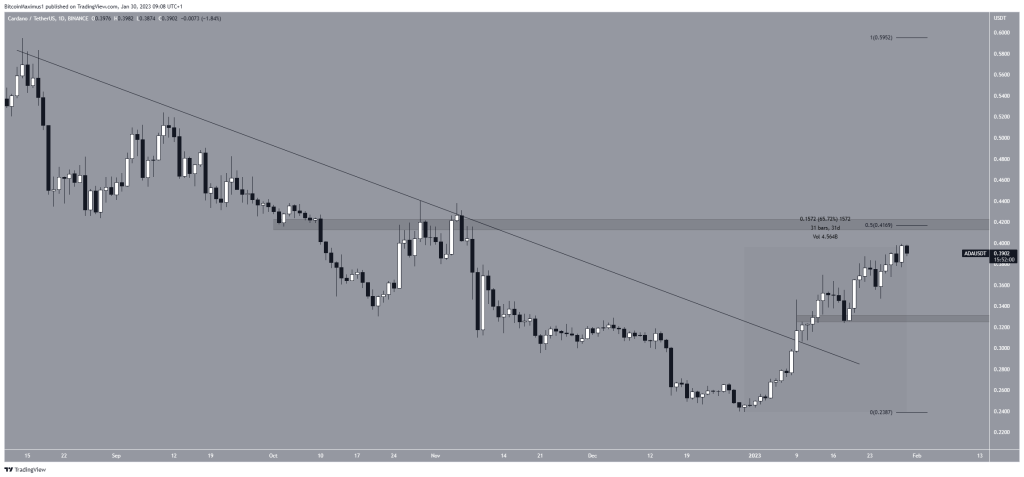
Cardano price has increased by 66 percent since the beginning of the year. It broke out of a long-term descending resistance line on January 9, according to analyst Valdrin Tahiri. The price is currently very close to the $0.42 resistance area. Its breakout or rejection can determine the direction of the trend. A breakout could accelerate the Cardano price upward move towards $0.52, while a rejection could lead to a retest of the $0.33 support area.
Filecoin (FIL)
Filecoin is a decentralized data storage network. It allows users to sell their storage on an open market. The native token FIL is used to store and distribute data. The Filecoin Virtual Machine (FVM) will be released in February. It will be introduced gradually to reduce the risk of outages. FVM will be compatible with the Ethereum Virtual Machine (EVM) and hence support its smart contracts.
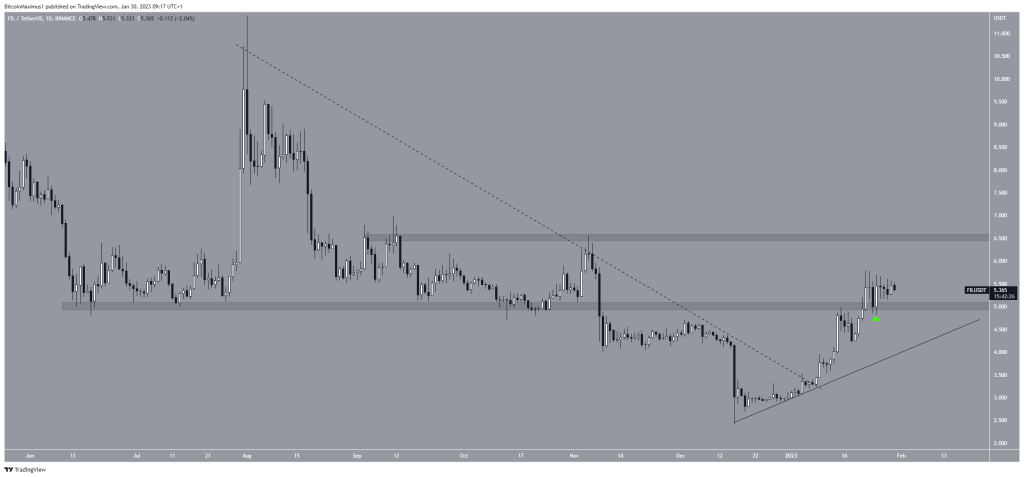
Like Cardano price, FIL price broke out of a descending resistance line on January 8, according to Tahiri. It then retraced the $5 resistance area and confirmed as support on January 25. The trend remains bullish as long as the altcoin does not close below the $5 resistance. In this case, the next resistance will be at $6.50. On the other hand, a close below $5 could result in a drop of the ascending support line at $4.50.
Internet Computer (ICP)
Internet Computer is a blockchain network that supports smart contract development. It tries to rediscover the interactions between users and internet applications. On February 6, Internet Computer held a meeting with the most interesting DeFi projects developing in Blockchain. According to the analyst, ICP price broke out of a descending resistance line on December 28. It has reached $6.28 so far. However, the price is still below the 0.5 Fib retracement level at $6.58. If it explodes, the altcoin could rise to the next resistance at $7.15. On the other hand, a rejection could lead to a retest of the $5 support area.
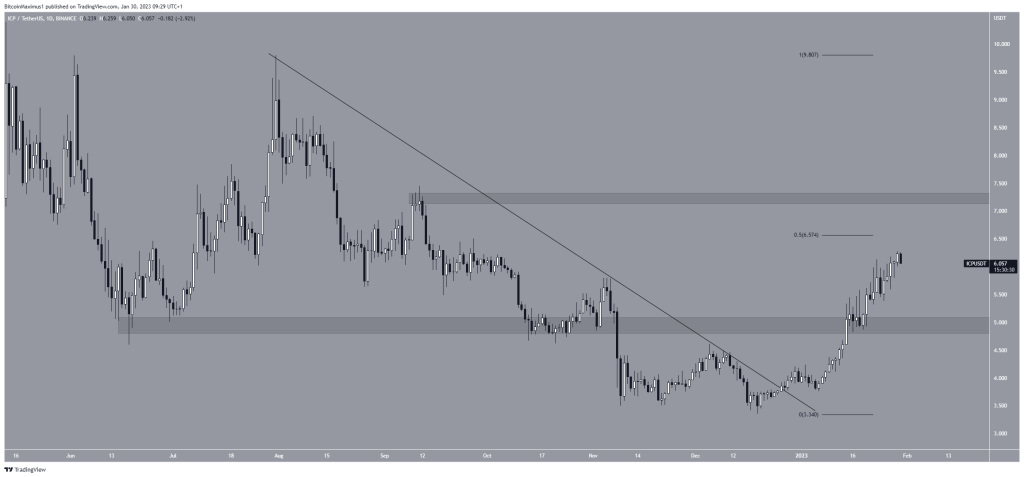
Flux (FLUX)
Flux is a decentralized Web3 infrastructure that hosts a large number of decentralized applications (dApps). Its native token is FLUX, which is used to purchase resources and reward miners/node operators. cryptocoin.comAs we reported, FLUX block rewards will be halved from 75 to 37.5 FLUX per block on February 4 at block height 1,310,700.
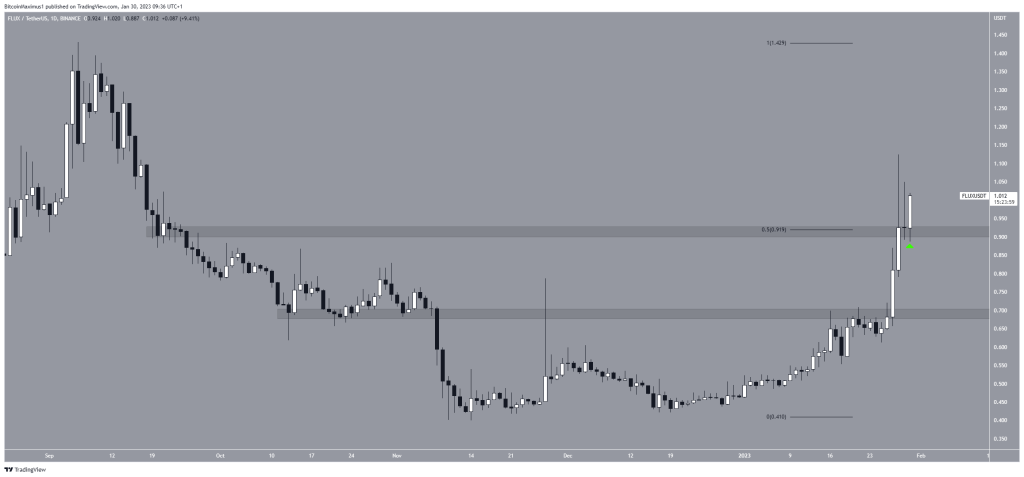
FLUX price climbed above the $0.92 resistance area and confirmed it as support on Jan. 30. If the increase continues, the next resistance will be $1.43. On the other hand, a close below the $0.92 zone could lead to a decline to $0.69.
primal
PRIMAL combines two existing concepts: STEPN-style sports tokens and Chiliz-style fan tokens. It aims to connect fans with famous athletes. The PRIMAL mainnet will go live on February 2. PRIMAL price hit an all-time high of $0.014 on Jan. 20. It then bounced back and confirmed the horizontal area at $0.009 five days later as support. According to the analyst, this created a long bottom wick. If the upward move continues, the next resistance will be $0.015. On the other hand, a close below $0.009 could lead to a decline towards $0.007.
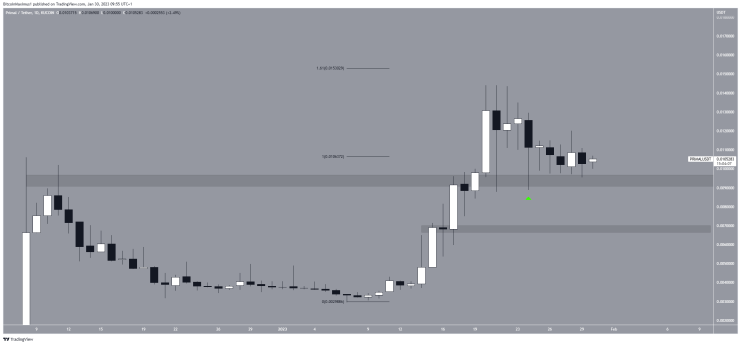
aptos (APT)
Aptos (APT) is one of the best performing currencies of 2023, growing more than 250 percent since the beginning of the year. APT has increased nearly 50 percent in the last seven days. The pace of development on Aptos has been remarkably remarkable so far. Aptos has more active developers than Avalanche and Tezos, but less active developers than Solana, Polkadot, Cardano, and Ethereum. According to analyst Christian Encila, this may be one reason why APT has continued its steady rise in recent weeks.
Phantom (FTM)
The vault mechanism, which acts as a new fund for decentralized financing in the ecosystem of the phantom network, was recently launched. On January 20, Ecosystem Vault was added to the network to provide alternative financing for Phantom-based projects. Meanwhile, in just one week, the token price rose 26.1 percent to $0.48, the highest level since May 2022. According to Encila, the new mechanism re-ignited Phantom’s network activity.
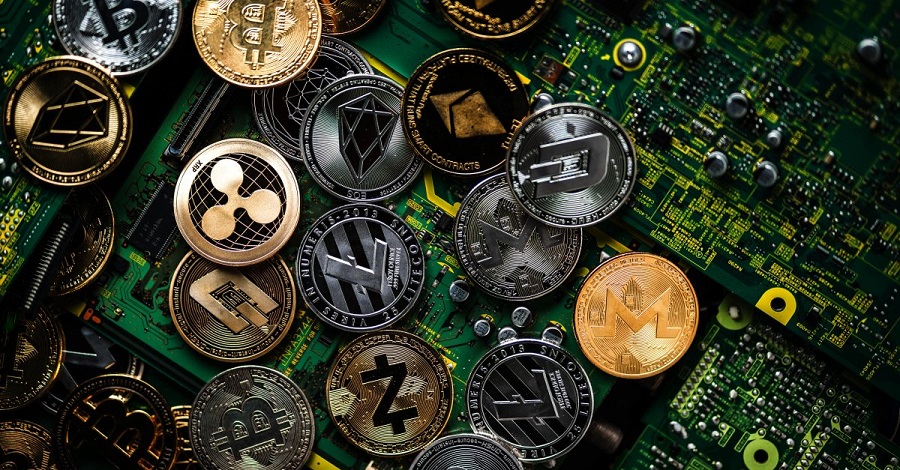
Avalanche (AVAX)
According to Encila, the February price forecast for AVAX is positive. After the initial adjustment, a price increase of at least $23.17 is expected. Conversely, a drop below $10.64 would make this bullish scenario false and trigger a drop towards $9.50. After making significant gains in recent weeks, AVAX restrained its pace and showed some composure as it faced multiple rejections near the descending resistance line formed in the previous seven months. Despite this, the entity is recovering and showing signs of strength.
Polygon (MATIC)
In terms of profit, MATIC’s daily on-chain transaction volume has increased, which is positive. A few additional factors also served MATIC’s benefit. In recent weeks, DeFiLlama’s statistics have shown that Polygon’s total locked value has increased rapidly. Additionally, MATIC has recently been shown to outperform Ethereum in terms of daily active addresses.







